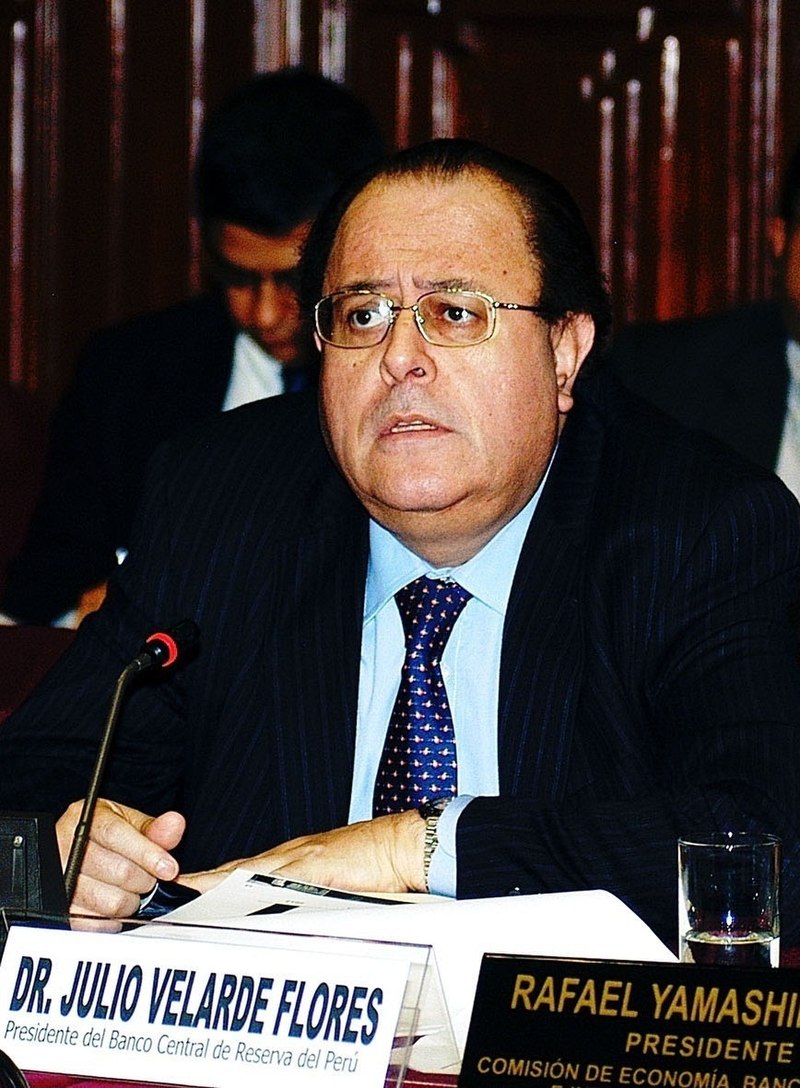
Julio Velarde
Julio Velarde is the President of the Central Reserve Bank of Peru (BCRP), a position he has held since 2006. Renowned for his expertise in monetary policy and economic management, Velarde has been influential in maintaining Peru's macroeconomic stability and promoting sound fiscal policies. He has played a key role in navigating the country through various economic challenges and is respected among international financial circles for his leadership and insights.
Global Media Ratings
Countries Mentioned
| Country | Mentions | Sentiment | Dominance | + Persistence | x Population | = Reach | x GDP (millions) | = Power |
|---|---|---|---|---|---|---|---|---|
| Peru | 3 | 7.67 | 0.28% | +10% | 32,971,846 | 100,934 | $230,000 | 704$ |
| Totals | 3 | 32,971,846 | 100,934 | $230,000 | 704$ |
Interactive World Map
Each country's color is based on "Mentions" from the table above.
Recent Mentions
 Peru:
Julio Velarde is the president of the Central Reserve Bank of Peru and is known for his successful management over nearly two decades.
9
Peru:
Julio Velarde is the president of the Central Reserve Bank of Peru and is known for his successful management over nearly two decades.
9
 Peru:
Julio Velarde is the president of the Central Reserve Bank of Peru and has highlighted the importance of monetary stability in the country.
9
Peru:
Julio Velarde is the president of the Central Reserve Bank of Peru and has highlighted the importance of monetary stability in the country.
9
 Peru:
Julio Velarde is mentioned in the context of political discussions about economic management.
5
Peru:
Julio Velarde is mentioned in the context of political discussions about economic management.
5
 Peru:
Under the direction of Julio Velarde, the Peruvian monetary authority has maintained a constant intervention policy.
8
Peru:
Under the direction of Julio Velarde, the Peruvian monetary authority has maintained a constant intervention policy.
8
 Peru:
Julio Velarde has been leading the Central Reserve Bank of Peru since 2006.
9
Peru:
Julio Velarde has been leading the Central Reserve Bank of Peru since 2006.
9
 Peru:
Julio Velarde is the head of the Central Reserve Bank of Peru (BCRP).
8
Peru:
Julio Velarde is the head of the Central Reserve Bank of Peru (BCRP).
8
 Peru:
Julio Velarde is mentioned as a political figure in the context of the elections.
5
Peru:
Julio Velarde is mentioned as a political figure in the context of the elections.
5
 Peru:
Mendoza highlights Julio Velarde's role in maintaining low inflation and stabilizing the exchange rate.
8
Peru:
Mendoza highlights Julio Velarde's role in maintaining low inflation and stabilizing the exchange rate.
8
 Peru:
Julio Velarde is the president of the Central Reserve Bank of Peru and has been honored for his contributions to economic policy.
9
Peru:
Julio Velarde is the president of the Central Reserve Bank of Peru and has been honored for his contributions to economic policy.
9
 Peru:
Julio Velarde, the president of the Central Reserve Bank of Peru, emphasized the importance of internal conditions for economic success during the Perumin Mining Summit.
7
Peru:
Julio Velarde, the president of the Central Reserve Bank of Peru, emphasized the importance of internal conditions for economic success during the Perumin Mining Summit.
7